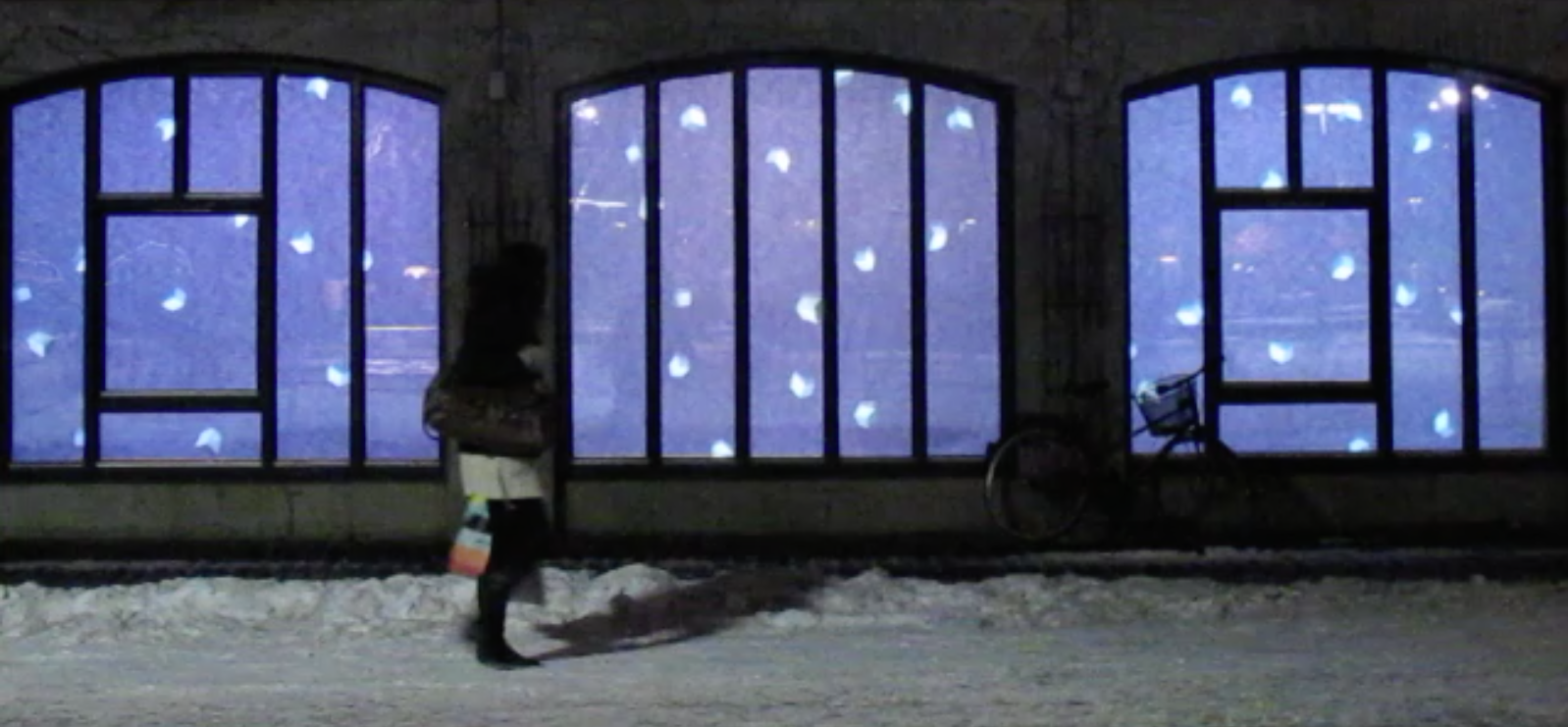Lys i gaden – Illumination
7.5 minuts. 2010. Digital animation and video.
Video Animation projected in the windows of Blågårds Library, ground floor, Blågårds Plads 5, 2200 Copenhagen N in December 2010!
Using narrative visual fragments, the artist Cecilia Westerberg brings forth the history and collective memory of the Square and its surroundings. With Nørrebro as its focal point the piece combines the larger historical events surrounding the area with the neighborhood’s everyday life. The site-specific work narrates the area’s particular history and tells of the Nazi Resistance, the coffee carts of the Blue Cross, demonstrations, and the recreational use of the area in the past 100 years. The film creates a connection to the past and in doing so touches upon our collective memory where repetition of phenomenon is more of a rule than an exception – the repository of History is never linear. Amidst the city’s noise, Blågårds Square is a breathing space -an area where there is room for no other traffic than bicycles, strollers and ice skates. And it is an area with troubles, with bad press, a hangout for alcoholics and gang members. It encompasses children playing, soccer games, and picnics on summer evenings. The aim for the film, ‘Lys I Gaden’, has been to present a contrast to the medias coverage of events surrounding Blågårds Square. I wanted to investigate whether the idea of a ‘unique history’ exists and, if so, how can the story be supplemented and retold; how to add new vantage points to the story itself? How can one amplify the retelling and visualize qualities such as mood or atmosphere?
Many are unaware of the events surrounding the Square and its neighboring streets- perhaps this version can contribute to a more nuanced picture of ongoing conflicts in the area. Blågårds Square always been a ‘lively ‘area, and not just now where recurring gang wars are prevalent.
A Square possesses a shared memory – and therefore it is interesting to resuscitate and rethink it periodically- hopefully contributing to a more nuanced perspective of the conflicts there. The medias’ story and the communal memory of events melt together and become folklore; one wonders whether one has read about it or whether it has been experienced personally or even heard it from a third party. As such, it is important that a place such as Blågårds Square owns its story.
The proposal for the work being shown has been honored with a prize from the Danish National Endowment for the Arts in a competition for Art in Public Spaces 2009 and is sponsored by the National Arts Council and the local council of Nørrebro.



